It’s pretty easy to believe that solids and liquids are made up of atoms and molecules, but it may be harder to accept that air is also made of these tiny particles. A good example that shows that air is really "stuff" is the way a parachute works. After doing the activity, think of the problems a parachute would have if air really was just empty nothingness.
Here's what to do:
- Work with your adult partner to measure a square on one side of your plastic bag so that each side of the square is 30 centimeters. Cut out the square.
- Cut 4 pieces of string about 20 centimeters long and tape them to the corners of the bag as shown.
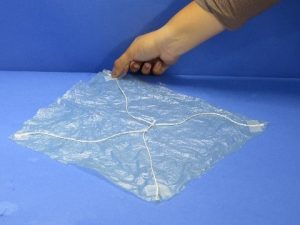
- Bring the free ends of the strings together and tape the ends together. Tape a paper clip to the strings. You should have a little parachute.
- Hold the parachute from the middle of the square and drop it from high over your head. Describe how it falls. Why doesn't it fall really quickly like a stone? What do you think makes it float?
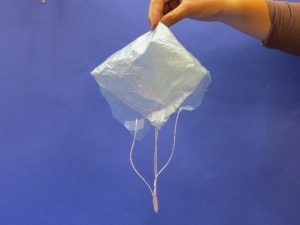
- Use another part of the plastic bag to make another parachute that is 15 centimeters long on each side.
- Cut 4 pieces of string about 20 centimeters long and tape them to the corners of the bag. Tape the ends together and tape a paper clip to the ends like you did with the smaller parachute.
Do you think this parachute will fall faster or slower than the larger one? Why?
- Hold both parachutes at the same height and drop them at the same time to see!
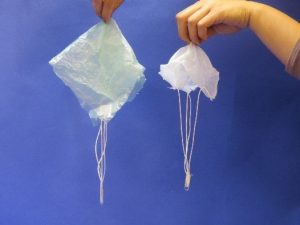
What to expect
The larger parachute should fall more slowly than the smaller one.
What's happening in there?
The air is made up of extremely tiny particles called molecules. These molecules are mostly nitrogen, oxygen, argon, water vapor, carbon dioxide, and some other gases. With all those molecules making up the air, there is lots of stuff that helps hold a parachute up as it falls through the air.
What else could you try?
Here’s another object that floats down using air to make it work.
What you'll need:
- Paper
- Scissors
- 2 paper clips
-
metric ruler
Be safe
Be sure to review the safety instructions on page 1 before proceeding.
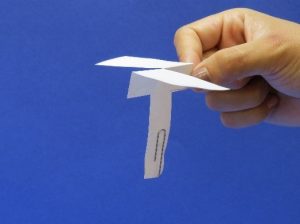
Here's what to do:
- Work with your adult partner to measure, draw, and cut out a helicopter like the one shown.
- Fold wing A toward you and wing B away from you.
- Attach a paper clip to the bottom as shown.
- Lift the helicopter and drop it from high over your head.
Describe how it falls. Do you think air helps it fall the way it does? - You could try making a helicopter with blades twice as long and see if it falls faster or slower. What do you think will happen?
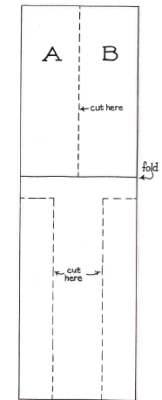
What to expect
The helicopter spins as it falls through the air.
What's happening in there?
As the helicopter falls, the air beneath the blades and the air around the blades interact with the blades at different speeds. These differences in the air’s speed pushes on the blades in a certain way, making them spin.
